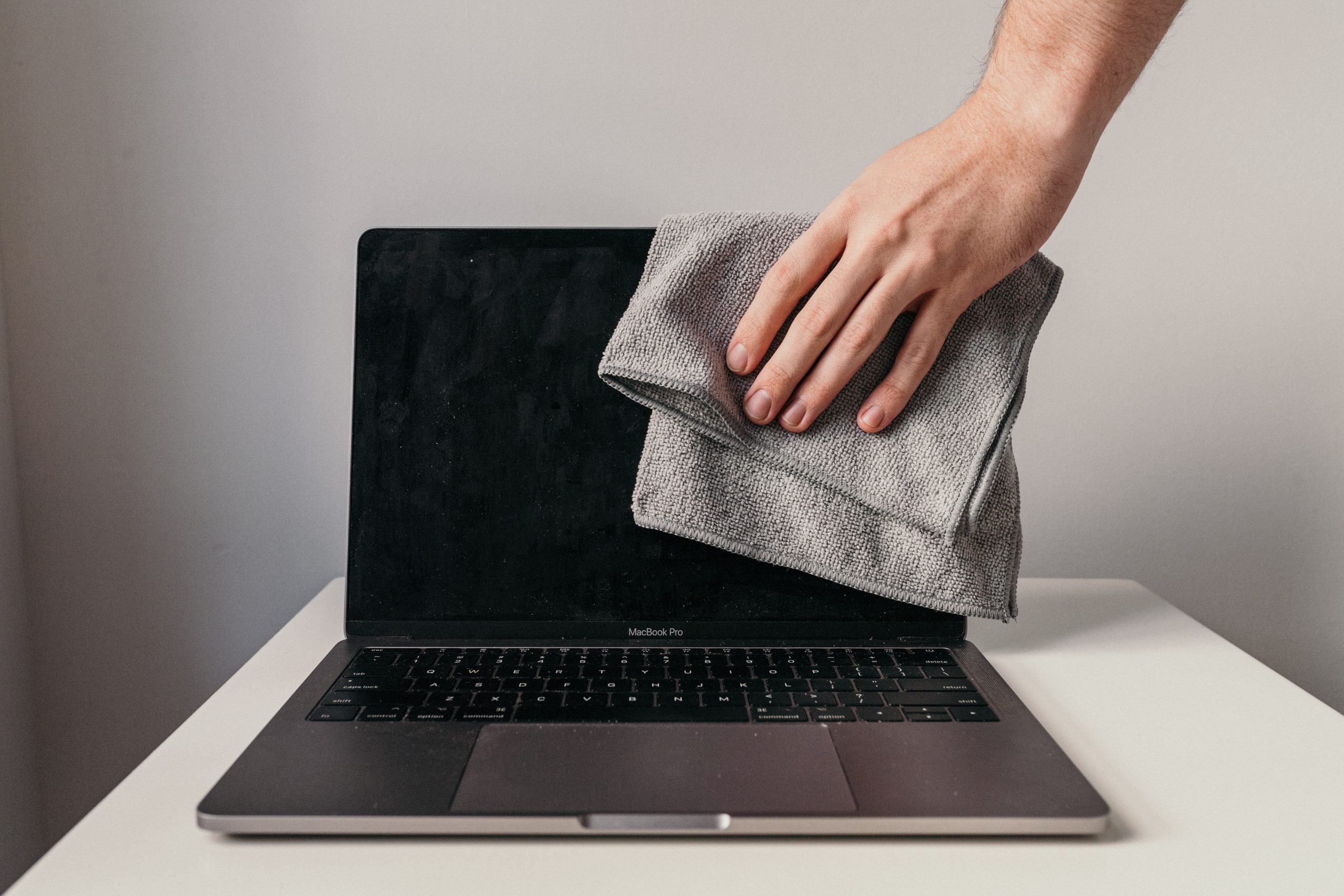The Art of Laptop Screen Cleaning: Keep Your Display Spotless Without Causing Damage
Is your laptop screen starting to look like a Jackson Pollock painting, but with fingerprints and dust instead of paint? Fear not, fellow tech enthusiasts! It’s time to embark on a thrilling adventure into the world of laptop screen cleaning. But before you grab that bottle of Windex and go to town, let’s dive into the do’s and don’ts of keeping your display pristine without accidentally turning it into an expensive paperweight.
The Tools of the Trade
- Microfiber cloth: Your screen’s new best friend
- Distilled water: Because your laptop deserves better than tap water
- Screen cleaning solution (optional): For those stubborn “what even is that?” stains
Pro tip: Avoid using your cat as a duster. While fluffy and adorable, they’re not known for their gentle touch on delicate electronics.
The Cleaning Process: A Step-by-Step Guide
- Power down and unplug: Give your laptop a little nap before the spa treatment.
- Dust be gone: Gently swipe the dry microfiber cloth across the screen to banish loose particles. Support the back of the display with your other hand – we’re cleaning, not testing the screen’s flexibility!
- Dampen the cloth: Use a small amount of distilled water on your microfiber cloth. Remember, we want it damp, not soaking wet. Your laptop isn’t training for the Olympics swimming event.
- The circular motion: Channel your inner Karate Kid and employ the “wax on, wax off” technique. Gently rub the screen in circular motions with the damp cloth.
- Stubborn stain showdown: For those persistent marks, apply a tiny amount of screen cleaning solution to the cloth (not directly on the screen!) and repeat the circular motion.
- The final touch: Allow the screen to air dry briefly, then use the dry portion of your microfiber cloth for a final, gentle wipe.
What Not to Do: The Laptop Screen Cleaning Hall of Shame
- No dirty cloths: Using a grimy microfiber cloth is like trying to clean your car with a mud pie. It’s counterproductive and messy.
- Hands off: Resist the urge to use your fingers. Your laptop screen isn’t a touchscreen (unless it is, but you know what we mean).
- Easy does it: Don’t channel your inner Hulk. Gentle pressure is key – we’re cleaning a screen, not kneading dough.
- Distilled water only: Tap water might be fine for your houseplants, but your laptop screen deserves the pure stuff.
- No direct spraying: Your laptop isn’t auditioning for a wet t-shirt contest. Always apply liquids to the cloth first.
Advanced Cleaning Techniques for the Brave
For those really tough stains that laugh in the face of regular cleaning methods, you might need to bring out the big guns. But proceed with caution, brave cleaner!
- For glass LCD displays: A solution of isopropyl alcohol and distilled water can work wonders. Mix it like a cocktail – but please don’t drink it.
- For plastic OLED displays: White vinegar is your friend. It’s not just for salad dressing anymore!
Remember, these are last-resort options. Use them sparingly and gently, like you’re defusing a bomb made of pixels.
Frequently Asked Questions
Q: Can I use my breath to fog up the screen and then wipe it clean?
A: While your breath might work wonders on your glasses, it’s not ideal for laptop screens. Stick to the microfiber cloth and distilled water method.
Q: How often should I clean my laptop screen?
A: Clean it when it starts to affect your viewing experience or when you can no longer tell if that’s a speck of dust or a misplaced period in your document.
Q: Is it okay to use a pressure washer for really tough stains?
A: Only if you want your laptop to double as a very expensive boat anchor. Stick to gentle cleaning methods!
In conclusion, keeping your laptop screen clean doesn’t have to be a daunting task. With the right tools and techniques, you can maintain a crystal-clear display without risking damage. Remember, a clean screen is a happy screen, and a happy screen means more productive (or Netflix-binging) time for you!
